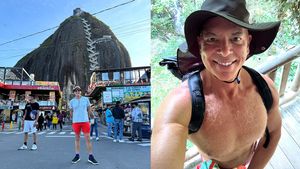Stigma
PHOTOS: Poz Man Photographs Self Daily for 14 Years
PHOTOS: Poz Man Photographs Self Daily for 14 Years

Former nature photographer Dirk H. Wilms turned the lens on himself, documenting his life, his fears, and his physical decline as an art form in itself.
Jacob Anderson-Minshall
Editor
April 29 2015 11:26 AM EST


























































































